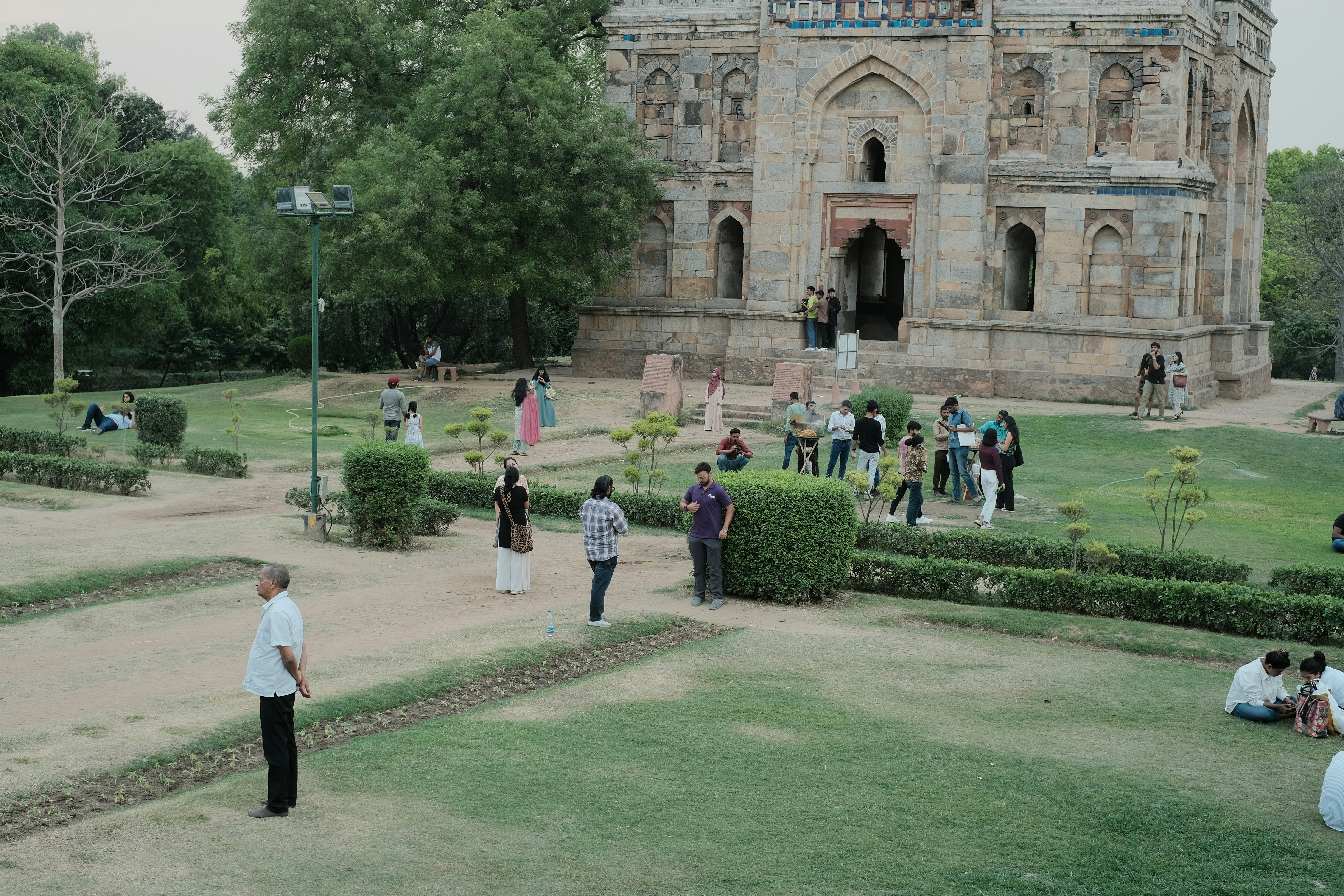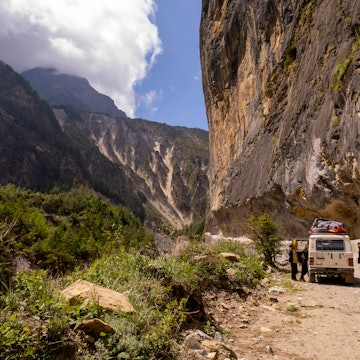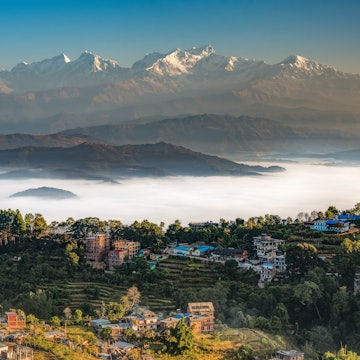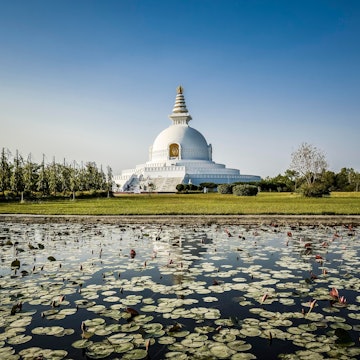
Delhi or Mumbai: which Indian megacity should you visit?



Delhi and Mumbai both brim with history, architecture and unforgettable food. iStock; Shutterstock
Loud, chaotic, majestic and photogenic – sometimes all at once – India has long cast a spell on travelers.
Yet choosing just where to visit in this continent-size country can pose challenges – especially when it comes to the big cities, where you’ll likely begin any itinerary. Should you visit the historic capital of Delhi, or 19th-century upstart Mumbai? We asked two writers to make for each of these world-class places.

Dive straight into Delhi
Puneetinder Kaur Sidhu now calls Chandigarh home – yet Delhi, her coming-of-age city, will always have her heart.
Let’s face it: by the time Mumbai came into its own in the early 19th century, Delhi had already been the center of power over seven formidable empires. (Eight, if we count its time as Indraprastha, the capital of the Pandava kingdom in the mythological Hindu epic Mahabharata. The atmospheric 16th-century ruins of Purana Qila supposedly now stand in the literary city’s place.)
Centuries of turmoil, including the struggle for freedom against colonial rule, have endowed Delhi with the ability to rise from the ashes time and again. How else do you think Dilliwalas acquired their carpe diem spirit? Or, their love for la dolce vita, for that matter? The Indian capital might feel fast-paced and modern – and it is. But it’s all comes wrapped up in a rich, layered past. It’s this dichotomy that attracts me to Delhi: it's a young and vibrant city unburdened by its history. The two simply coexist.
No other Indian city can match Delhi’s depth of heritage. Alongside biggies like the Red Fort and the Jama Masjid mosque, architectural gems hide in plain sight. They’re found along the packed lanes of Shahjahanabad and are laid out along the broad leafy boulevards that radiate out from India Gate, such as the former stately home to the British Viceroy, Rashtrapati Bhavan, which crowns Raisina Hill. History hides behind the glitzy upmarket malls of Saket and stands tall in Mehrauli’s Qutb Minar Complex, engulfed by the dense Aravalli woodlands.
Sorry, Mumbai. You can’t match this.
Then there’s Delhi’s vibrant food scene, a mouthwatering mélange of cultures past and present. Fed by an ability to absorb people without making them feel like outsiders, the capital has some of the finest flavors Indian cuisine has to offer. From the Mughlai-influenced chaats (savory street snacks), niharis (slow-cooked meat stews) and kebabs of Old Delhi to legacy dining at the iconic Bukhara or Dum Pukht, the city is stuffed with great places to eat. Premium fine dining happens at restaurants like Indian Accent, and the capital also offers the best in global cuisine, including Peruvian, Ethiopian, Japanese and beyond. Experiential travelers will find bespoke culinary walks that visit the Khari Baoli spice market, or include cooking classes with home chefs or dining with local families.

Popular regional Indian cuisines have also taken center stage in Delhi. You can now eat fine Naga pork at Dzukou Tribal Kitchen, relish a variety of Bihari thalis at The Potbelly, or dig into the Tamil and French specialties at Château de Pondichéry. And while I confess that no one can do a vada-pao (deep-fried potato dumpling served in a bun; it’s my all-time favorite street snack) like Mumbai, Delhi trumps the Maximum City for all other deliciousness.
Even nature. Unlike Mumbai’s skyscrapers, Delhi spreads out under one of India’s greenest canopies; the city is lush and home hundreds of tree species, including the 600-year-old Khirni evergreen. Massive public parks – like the 15th-century, tomb-speckled Lodi Garden near posh Khan Market and the newly refurbished Sunder Nursery adjoining Humayun’s Tomb – give Dilliwalas space to breathe.
As an international travel hub and politically charged city-state, Delhi is also a cultural hotspot and shopping mecca. You can seek out bargains galore at Janpath and Sarojini Nagar markets, or go luxury-clothes shopping in the city’s deluxe malls. Breakaway India’s textile and sustainability tours even allow visitors to buy directly from skilled artisans.
There’s simply no reason to visit anywhere else.

Make your way straight to Mumbai
Born and raised in Mumbai, Meher Mirza has written about the city her entire life. Indeed, she cannot imagine living anywhere else – and always seeks to convert everyone else to her cause.
Reams have been written about Mumbai’s charms: its colonial Gothic, Indo-Saracenic and Bombay Deco architecture; its UNESCO-certified monuments; the amphitheater of "the Queen’s Necklace"; its sun-scorched beaches; its bazaars; its temples, mosques and dargahs, churches and synagogues; its restored art deco cinemas; and the siren call of its Bollywood industry.
After all, this is the City of Dreams.
But the Mumbai I love ferrets away its best bits – for example, in the tiny East Indian and Goan hamlets of Khotachiwadi, Ranwar and Matharpacady. In Rajgriha, which memorializes one of the world’s greatest minds, the Dalit leader, scholar and nation builder Dr Babasaheb Ambedkar. In the Willy Wonka–esque shops like Davar & Co, which sell rows of brightly colored syrups and soft drinks. In cultural festivals such as Mood Indigo, thronged by indie rock and metal bands. In Matunga’s Tamilian cafés, which once helped support Carnatic musicians.
Delhi loves to brag about its history, sure – but scratch a little deeper, and you will find a Mumbai that once stood at the crossroads of antiquity. The city is honeycombed with precolonial cave architecture – some 150 monuments at last count – including the 2000-year-old Buddhist Mandapeshwar caves. Then there are the Jogeshwari, Kanheri and Magathane caves. I could go on.
At the Chhatrapati Shivaji Museum, you might spot age-dulled edicts, statuary and stelae, issued by Buddhist, Hindu and Muslim rulers thousands of years ago. Keep an eye out for Emperor Ashoka’s 2500-year-old edict etched in basalt, pleading for liberalism and non-violence from his citizens. Bang in the center of bustling Malabar Hill you’ll find the medieval Banganga Tank and temple complex. All of these together stand as extraordinary testimony to the city’s palimpsest of religions, and a record of the waxing and waning of ancient empires.
But what if you tire of the bedlam of car horns and concrete? Delhi may have its manicured parks, yes – but we have wild mangroves and riverways that seam through the city with flamingos and ibis and painted storks all flocking to our wetlands in winter. We may be penned in by urbanization, but fragments of forest still dot the city (Sanjay Gandhi National Park, naturally, but also the Peru Baug hills, the Dharavli Adivasi village and the IIT campus).
I also love Mumbai for its stone-gray sea, the lifeblood of Mumbai’s indigenous Koli fisher communities, as well as a conduit for the city’s multiculturalism. While sandy beaches abound, I most love its ocean-abutting, now mildewed forts, once imposing sentinels of the city.

Most of all, I love it for its food. Multiculturalism is inked in Mumbai’s very bloodstream, kindling some tremendous culinary invention. Start with the its doughty vada-pao – the food of mill workers and the working class – and bhel, a puffed rice–and–vegetable snack invented by footloose migrants from Uttar Pradesh or maybe Gujarat, and which has since become a symbol Mumbai. Then move on to Chinese dosa, a jumble of spiced noodles, spring onion, cabbage and carrots enfolded in a dosa; the sizzler, distant kin to teppanyaki-style cooking; and Manchurian chicken, pan-fried with garlic, ginger, green chilis and soy sauce, and purportedly invented by the Kolkata-born, Mumbai-dwelling son of a Chinese immigrant.
Mumbai is home to singular Irani cafes, too – establishments set up by 19th-century migrants from Iran that have long catered to a cosmopolitan crowd: Hindus, Muslims, Parsis, Jews and Christians of all classes. Then there’s the superb seafood served straight off the boat. Tiny crunchy mandeli fish eaten bones and all. Crisp-fried Bombay duck served on a pillow of semolina. Delicate teesrya (clams) in a vivid coconut gravy. Parsi-style red pomfret curry and rice.
All are served at unassuming joints, though Mumbai also has some truly world-class restaurants, where chefs and bartenders – no longer leashed by the constraints of tradition – serve up contemporary, ingredient-led versions of dishes that champion Indian fruit and vegetables.
Besides, the city includes shops for every budget, bopping nightlife and streets safe enough to walk in after a drink or two. Why would anyone want to visit anywhere else?















